Here is the Volume 3 of Volleyball from When you watch something, visit us first! Mr. Futoshi TERAMAWARI, General Manager of #PFUBlueCats Ishikawa Kahoku, told us about Serve in Volleyball this time. This is the combined version of Part 3-1 through 3-5 on our YouTube channel.
In Vol.2, we learned about the importance of mental condition in Volleyball.
This time, we interviewed Mr. Futoshi TERAMAWARI, who was Head coach of Men’s Volleyball National team as well as Team Manager of Women’s Volleyball National Team, and is currently General Manager of PFU Blue Cats Ishikawa Kahoku, a member of DAIDO LIFE SV.LEAGUE WOMEN, about Serve of Volleyball.
We hope you will find this information useful when watching games.
.png)
Part 3-1: Target on Serve (First Part)
Q: Could you let us know how the target on Serve is decided?
There are no Serves with no aim. Basically, players deliver a Serve to certain targets with the intention of making the opponent some effect. Just having such an intention will change the possibility of breaking the opponent’s Reception.
Of course, the strength of Serve as well as making the opponent move back or forth will also change the rate of accuracy of the Reception. Basically, it is principle to target player who is not good at Reception i.e., at receiving Serve.
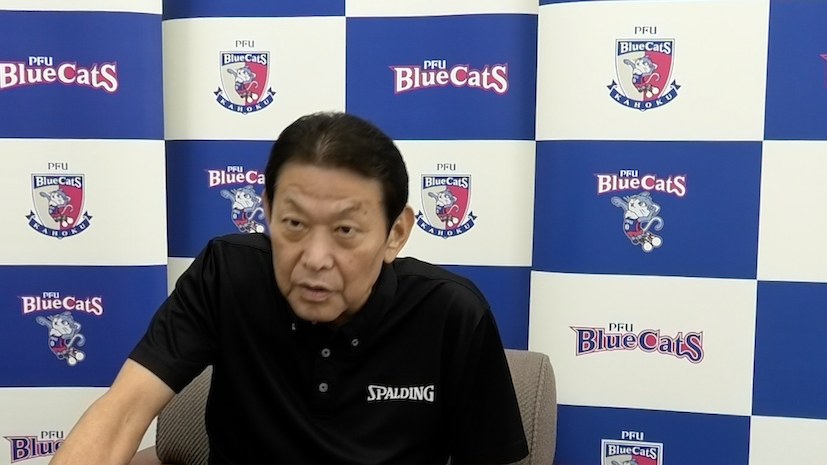
Which players have a good reception accuracy? What position does such player also have the best accuracy? For example, when he is on the left side, in the middle, or on the right side. Teams analyze such data carefully to determine the target of Serve.
What kind of Serve does player deliver to the target? To make the receiver move back or forth? Or left, or right? After deciding on that, players get ready to Serve. So it is decided in prior that the next Serve is target the player on the right side and backward, and for example, whether to break the reception by dropping Serve forward, or to make a hard Serve and put pressure on the opponent.
Players are learning how to serve in various ways, such as hitting a short serve or aiming a serve at a certain spot, in their daily practice. Decide on a target and deliver Serve surely there. To aim for such target is principle. Basically. Nothing more, nothing less.
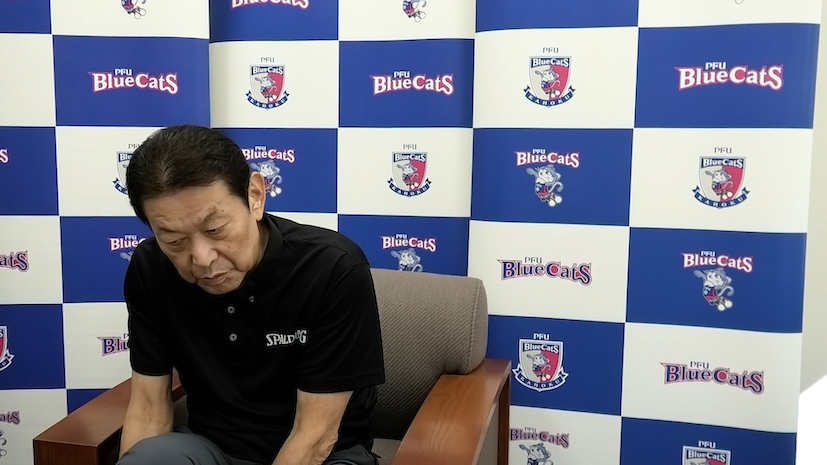
Q: So when a certain player serves in the same set, the opponent are always in the same rotation, aren’t they?
Basically. That means, when a certain player Serves, they know which opponent’s player is in which position from data. So the target of Serve will be here. So when a certain player is to Serve, the target has been determined previously, so basically he always Serve to that target.
And, basically making Serve to the same target for a while. Sometimes, the opponent’s reception may not be in disorder. Today, their reception does not collapse. Then the bench will instruct Server to change the target.
Or, for example, pretend to Serve to targeted player always and make a short Serve in another direction. Players practice such skills by practicing Serving in many different variations in training. The server makes the final choice, and that is, how should I say, the basic Serve principle, teams in the SV League execute. Well, it is the similar way worldwide.
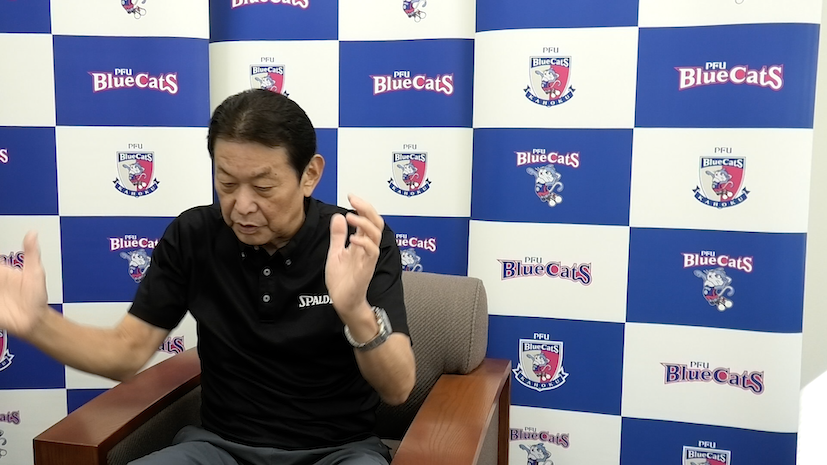
Basically, how to set the target and to hit Serve to there. If it is a jump Serve, it is decided in prior to hit it with a side spin, straight, or with half the power, and then Serve is to be hit. After deciding that and Serve is hit, and if it goes where to go and disrupts the opponent’s reception, then the Serve is a success.
Q: Is the reason for targeting the opponent’s weak player to make the reception bad?
Right.
Part 3-2: Target on Serve (Latter Part)
And even if the Reception goes to S firmly. Suppose a Serve is hit in the direction of S1. At that time, S moves to here. That means the ball comes like this. The ball comes from the left rear of S.
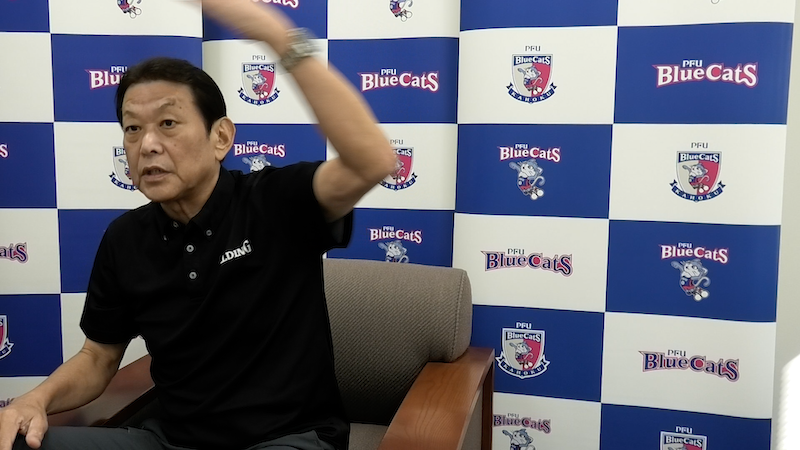
For balls coming from the left rear of S, the data sometimes shows that the scoring rate does not increase in certain rotations even if the reception is well. No matter how Receptions are delivered well to S.
In such cases, Coaches give the players instructions to deliver Serve here in the pre-match meeting. They tell players to target this point anyway. Even if the opponent’s Reception goes well, they tell to target there.That way, even if the effectiveness rate of Serve is not good, they can still win the game.

Sometimes the data clearly shows that the side-out rate of the opponent is not good at all, even though they are delivering the Reception pretty well. That is quite irregular, though. In the contrary, if a team is doing it that way, and it is not well and the opponent scores points, then the Coaches instruct to change the target of Serve.
There are a lot of options to do.
And, some team may target at Serve for the front and back of the Outside Hitter (OH) in the opponent’s in the front row, and put pressure to make that player receive the Serve first and then enter to attack. For example, if the target is at the back of OH, he has to work hard because he has to enter to attack quickly. And, if the target is at the front of OH on Serve, he has to go forward once and then back immediately.
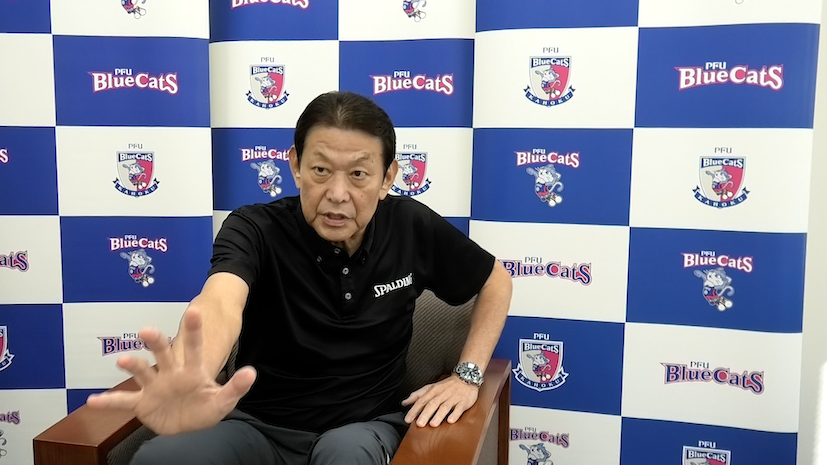
That is how to put pressure on OH. So it is basic Server’s role to serve to make the opponent collapses and to have the advantage. Except when such Server is going for “Ace” Serve. Recently, there are many situation to aim for the Ace Serve. With the strong jump Serve.
In such case, Server will serve boldly without fear of making any mistake. In other cases, with a floater Serve or a jump serve in which with the 80% power of the maximum, the ironclad rule of the target will be the opponent’s weak area as I mentioned before. There is not much else.
So basically, the target of Serve is the opponent’s weak points. In addition to it, to put pressure on OH in the front row. This is the orthodox way to Serve.
Part 3-3: Receiving Serve
Q: What do the receiving team think about against their opponent’s Serve?
On Serve, Outside Hitters (OH) in the front row are mainly targeted. We do not target Libero on Serve basically.
In current Men’s Volleyball, Jump Serves are the mainstream. In this case, three players make Reception of Serve. In Women’s Volleyball, also three players on Reception. Basically, Reception with four players is quite rare.
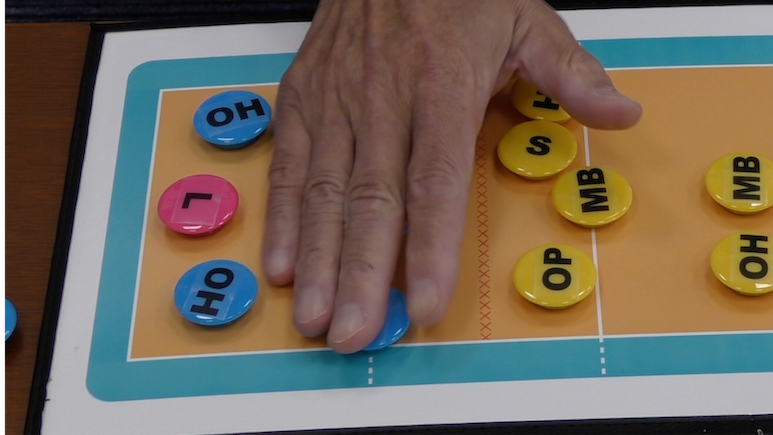
When Serve by a player with very high speed, like Mr. Yuji NISHIDA, there are times when another player, Opposite, comes in here, and these four players are to receive Jump Serve that will go through these players. But this is very rare.

In the Men’s Volleyball, Jump Serves are basically received by three players. Floater Serves are received by two people, very fast Serves are by three people, and so on, and it differs from case to case. In Women’s Volleyball, three players are also to receive Floater Serves. Because each player’s defensive range is narrower than that of Men.
Q: Who are in those three players for Reception?
Basically, two Outside Hitters (OH) and another, Libero (L) will receive Serves. Most of Opposites (OP) do not receive, basically. If OP is in the back row, he or she may be here or here.
Then one of these two OH is in the front row. So, the standard strategy is to target this OH of front row with Serve. If Serve goes to the front of the front row OH, this OH has to move back after Reception and then go forward again for the attack. In the contrary, if Serve goes to the back of OH, this OH has to move a long distance to attack. This is the reason why OH in the front row is targeted on Serve.
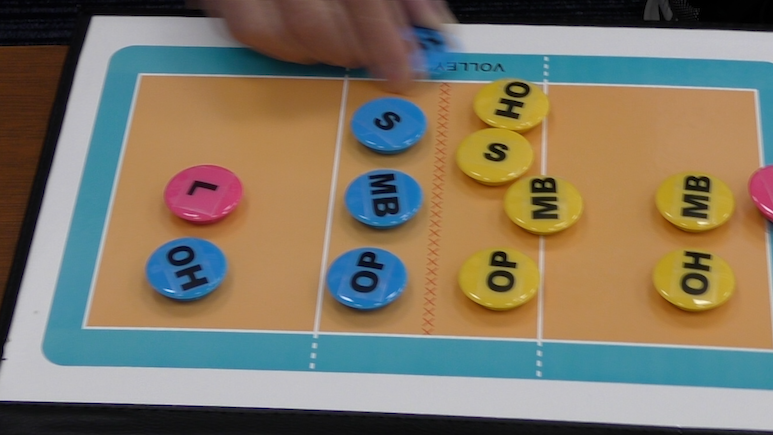
However, when the return rate of the back row OH is completely worse than the front row OH. For example, if the return rate of the front row OH is 65% and Reception of back row OH is only 50% to Setter (S), then of course there are times to target the back row OH.
But I do not think to target L with Serve is quite rare. But if Serve to L makes the return rate bad. If Serve to L is effective, L might be targeted on Serve.
Q: How is the role of Libero on Receptions thought?
Basically, L is, basically, to cover wide area. For example, this OH is in the back row. And if this OH is front row, L comes close to this OH a bit to cover and support this player. By doing so, L makes this OH only receive Serve in front of him/her.
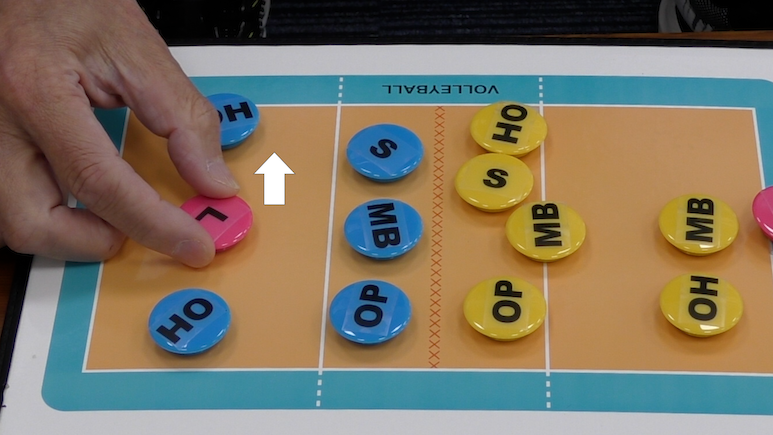
The opponent made this OH the target of Serve, but when Serve comes around here, L, who is coming close to OH, will receive Serve instead of OH.
But if this OH in the front row receives well, it doesn’t matter at all. If this OH can make good Receptions, that is the best. In order not to put pressure on the OH in the front row, coaches often make L come close to OH side instead of dividing the width of the court into three for three players, to make OH in front row focus on the attack.
Part 3-4: Reception by Setter
Q: Is it common that Libero is going to set up when Setter receives?
There used to be a time when the Middle Blocker (MB) would set up when Setter receives Serve. When S receives here, instead of delivering the ball toward Libero (L), there used to be to deliver the ball to the MB.
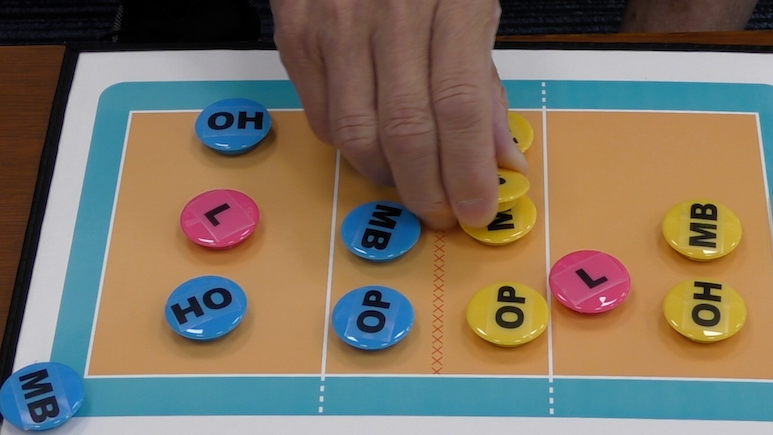
However, many L players are also good on underhand passes. So I think the aim is to let L with good skill to set up, not MB.
Of course, MB may set up. If S delivers the received ball to MB, MB can control the ball at a high point, and in some cases, MB can attack that ball directly.
So I think the reason why there are many cases where L to set up the Reception ball from S is that in many cases L has better ball control.
Q: Is it also common for Libero to setting up to the left side?
No, it can be set up either on the left side or the right side. It can be a back attack. Well, it is often delivered to the left side. Especially in Japan.
We often see quite a few times that L sets up the ball close to the net and take the rebound. There may be such a commitment within the team. There may be a kind of a rule of the team.
But basically, when the ball is set up from an un-normal position, it should be delivered to a place where it is easy for the attacking player to hit accurately.
Q: How do you think about Japan’s Men’s national team at Paris Olympics intentionally make Libero to set up to near the net?
Well, it is difficult for attackers to hit if the ball is delivered close to the net. Knowing that, Men Japanese national team just do it, but I still think it is better to deliver the ball a little away from the net, where the attackers can hit easily.
Q: So in Japan Men’s national team, do you think that there was any pre-determination to continue to the next play rather than to spike when Libero is setting?
Well, it may be because if the attackers force themselves to hit the ball close to the net, they will not make it. Such attacks will get shut out by the opponent’s block, or will be one touch. If that is the case, I think they chose to bring the ball to them once again and to attack in a better situation. This is my opinion.

Part 3-5: Serving tactics
Q: Could you tell us about the tactics on Serve besides to changing the speed of Serve?
Well, addition to that, whom to target, or to target between receivers.
I think those are also to consider.
Q: The theory is to target a player who is not good at Receptions, right?
Yes.
Basically, it is the theory to target players with poor Serve return rates.
Q: What is the intention when targeting between players on Serve?
If Server targets between players with Jump Serve, Receivers think which player should receive. If Serve goes to just in front of a receiver, he/she can receive in anyway even Serve is quite fast and strong. So, to target between players are common.
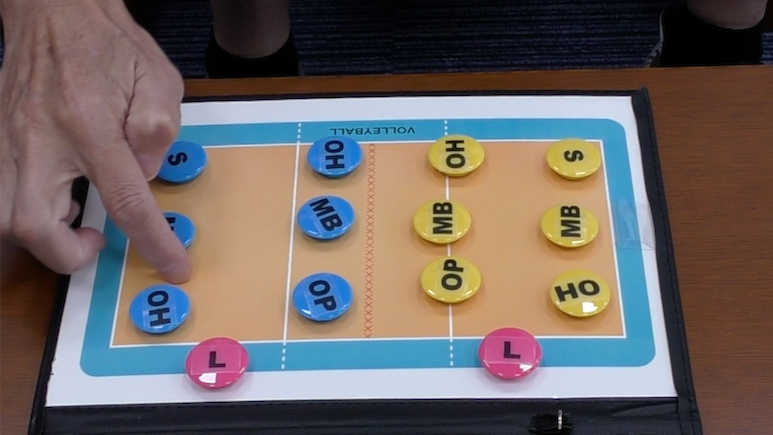
When server targets between players and Serve goes the area like these, such Serves score points quite often.
Q: By targeting between players to lead a momentary delay of judgment of the players around?
Yes. Yes. Another choice is, the opponent’s Middle Blocker (MB) is here, and with delivering Serve here or here to eliminate the opponent’s Quick attack and narrow down the target of their own block. Of course, if this MB makes a good Reception, he/she can go into a Quick attack.

But basically, MBs do not have much opportunity to receive Serves. In many cases, when MB goes to the back row, MB is substituted with Libero (L). So, by delivering Serve where MB is not good at, the quality of Reception will also be poor. And, if MB’s Quick attack is not available, the opponent’s attack options will be narrowed down to the side. So, there are many cases.
On the other hand, Setter (S) is usually here, and sometimes the data shows that this S is not good at handling balls coming from the right side. Then, even if there is a good receiver on the opponent’s right side, they may dare to target the right side.
Such points are all decided before the games as a team strategy. Also, recent Men’s volleyball, such as “Blain Japan”, has started to play more delicate Volleyball than in the past.
*Mr. Philippe Blain: Head Coach of men’s Japan national Volleyball team at the Paris Olympics.
One thing I would like them to improve is tactics on Serve. I think there is still plenty of potential for progress in Serve. To think a little more delicately and “now to serve at 80% power here,” or “to make sure to deliver Serve to the opponent’s court this time”. Or, “to take a risk and hit a strong Serve as much as possible in this situation”, and like these, I think Japanese volleyball would be stronger if they were more subtle in their use of Serve.
When we watch a Volleyball game while considering Mr. NISHIDA will be aggressive with a strong Serve or what kind of Serve he is going to hit, and he hits a Serve that slides with a lot of spins. I see, if the Serve goes there, it will be a point, and Volleyball becomes much more interesting when you watch it in that way.
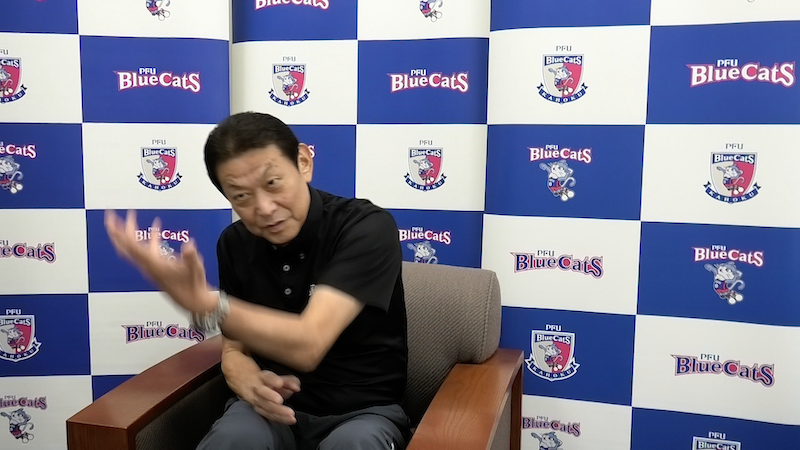
When we watch the Men’s Serve, it is still difficult to return Reception well to S if Serve goes even a little far from the receiver’s body. So in current Volleyball, Serve and Reception are very important. I think these two are extremely important.
Share this content:
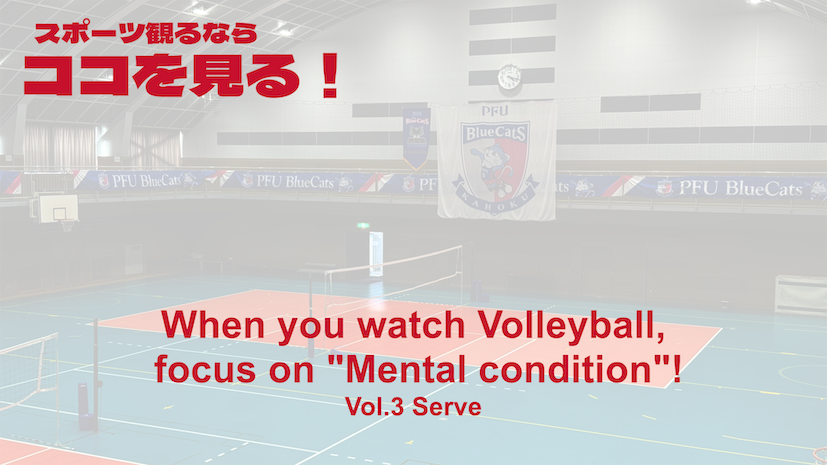
コメントを残す